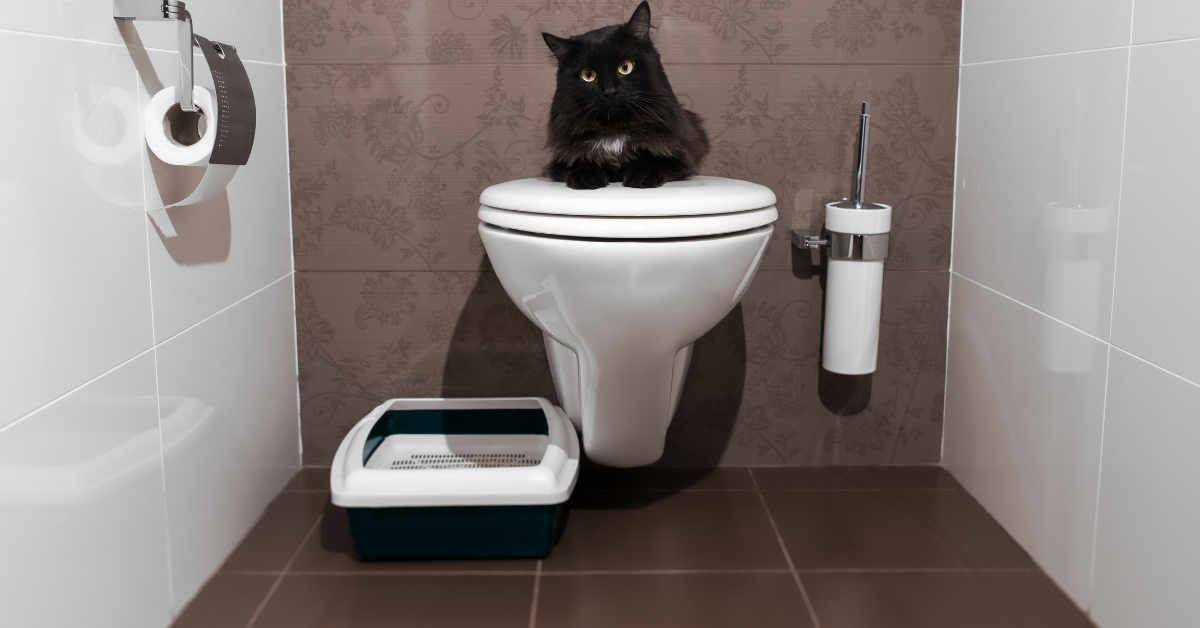Prevent Clogs and Damage: Never Flush Cat Poop Down Your Toilet - Professional Insights
Prevent Clogs and Damage: Never Flush Cat Poop Down Your Toilet - Professional Insights
Blog Article
What're your ideas concerning How to Dispose of Cat Poop and Litter Without Plastic Bags?

Intro
As cat proprietors, it's essential to bear in mind how we throw away our feline pals' waste. While it might seem hassle-free to flush feline poop down the toilet, this technique can have damaging consequences for both the atmosphere and human health.
Environmental Impact
Purging cat poop introduces unsafe microorganisms and bloodsuckers into the water, posing a considerable threat to aquatic environments. These contaminants can negatively affect aquatic life and compromise water high quality.
Wellness Risks
In addition to environmental worries, purging cat waste can likewise posture health risks to people. Pet cat feces might contain Toxoplasma gondii, a parasite that can create toxoplasmosis-- a potentially serious health problem, specifically for pregnant women and individuals with weakened body immune systems.
Alternatives to Flushing
The good news is, there are more secure and more accountable methods to take care of cat poop. Consider the following options:
1. Scoop and Dispose in Trash
The most typical technique of taking care of pet cat poop is to scoop it right into a biodegradable bag and throw it in the trash. Be sure to use a devoted trash scoop and get rid of the waste immediately.
2. Use Biodegradable Litter
Choose naturally degradable feline trash made from products such as corn or wheat. These clutters are eco-friendly and can be securely thrown away in the garbage.
3. Bury in the Yard
If you have a lawn, consider burying pet cat waste in a marked location far from veggie gardens and water sources. Be sure to dig deep adequate to stop contamination of groundwater.
4. Set Up a Pet Waste Disposal System
Purchase an animal waste disposal system especially made for feline waste. These systems make use of enzymes to break down the waste, minimizing odor and environmental influence.
Verdict
Accountable animal ownership expands beyond offering food and shelter-- it also entails appropriate waste management. By avoiding purging feline poop down the toilet and going with alternate disposal methods, we can decrease our ecological footprint and shield human wellness.
CAN I FLUSH MY CAT'S POOP DOWN THE TOILET?
Always avoid flushing cat poop down the drain because not only could it potentially contain harmful parasites called toxoplasmosis, the litter could sit in your line and lead to a clog.
Plenty of waste gets flushed down your toilet every day, so what harm could a little cat poop and cat litter do? The answer is a lot, which is why you never want to send it down your drains.
Can I Flush My Cat's Poop Down The Toilet?One of the biggest problems with flushing your cat’s presents is the harmful parasites in your feline’s stool called toxoplasmosis. Extremely dangerous for humans, especially pregnant women and people who are immunocompromised, these parasites can cause a multitude of problems for unborn babies and even cause death or miscarriage if the infection happens early. That’s why you should always avoid touching cat poop. Also, water systems are not equipped to handle toxoplasmosis and are unable to destroy the parasite before it’s sent back into the environment, potentially jeopardizing the health of local area wildlife, specifically marine life.
Flushing cat poop could also lead to a future drain clog. Try as you may to eliminate any litter from it, there will always still be some stuck on there – and even if it says flushable on the label, it’s not! Cat litter is made up of bentonite clay, which has the tendency to harden when wet, creating a thick, almost cement-like quality. Cat litter that ends up down the drain can expand from the moisture in the pipes and then harden, blocking any wastewater. If you have a septic tank or a cesspool, it cannot handle cat litter either, no matter what kind. If it solidifies in the tank, in any of the system’s major parts like the inlet baffle, it’ll create some expensive problems.
The best way to dispose of cat poop safely is to scoop it into a bag and throw it into the trash – and ways of dealing with the smell include adding baking soda and replacing the box more.
Now that we’ve explained the potential harm that flushing cat poop can cause to you and your drains, you might be wondering the best way of dealing with it. Unfortunately, it’s the old-fashioned way of scooping it into a bag and then placing it into a trash can. They also make pet-proof trash cans that lock in the smell, so that you don’t have to always immediately take it out. If you’re tired of smelling the litter box after even just one use from your feline, there’s things you can do to help combat that smell. Adding baking soda to the litter will reduce smells, but just don’t add too much or your cat will no longer want to use the box. You could also replace the box more frequently, at least once a year, as those smells can just seep inside the scratch marks. Lastly, try changing to a new litter formula – some are better with smells than others.
As a fervent person who reads on Don’t flush cat feces down the toilet, I figured sharing that piece of content was a smart idea. Do you know anybody else who is inquisitive about Can You Flush Cat Poo or Litter Down the Toilet?? Please feel free to share it. Thank you so much for your time invested reading it.
Go Company Report this page